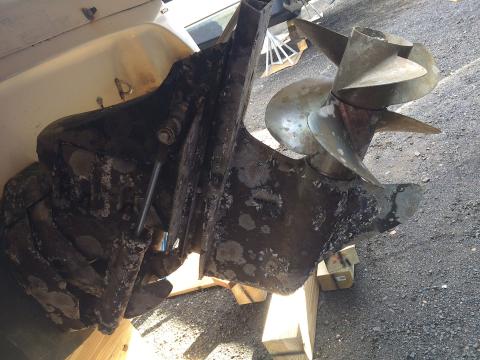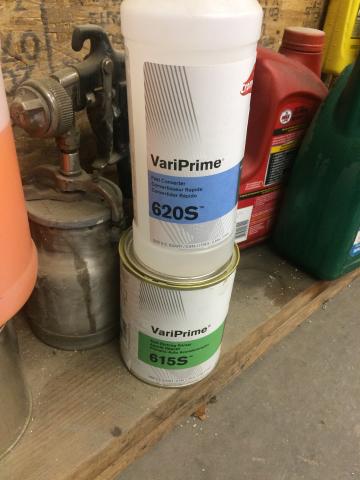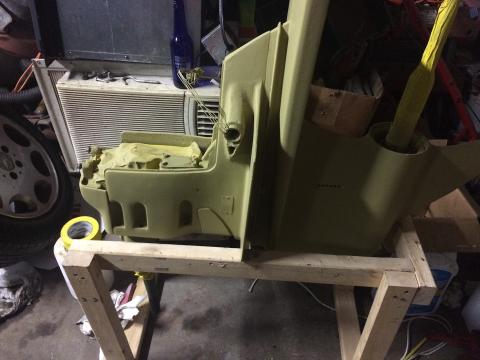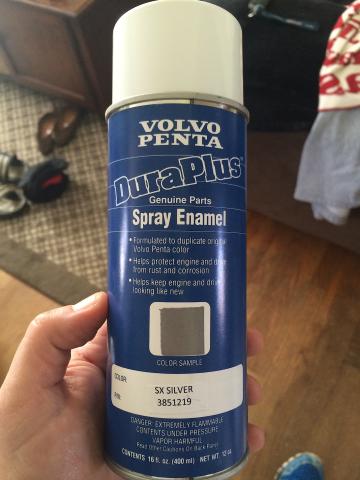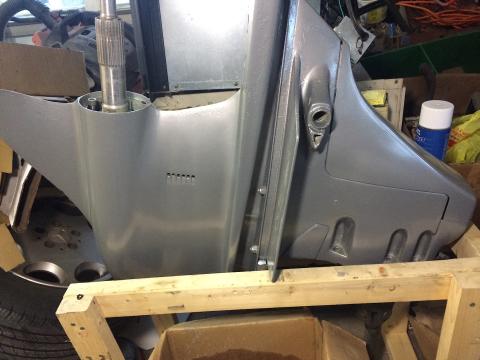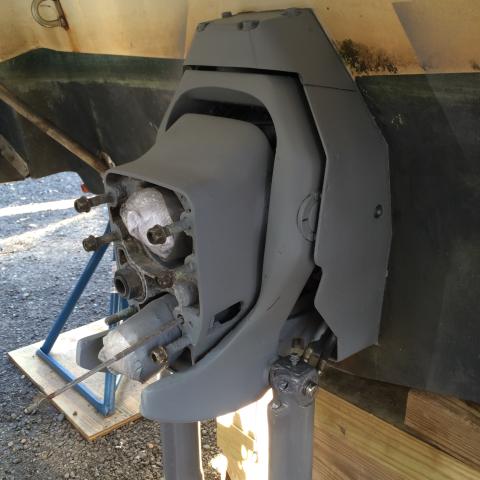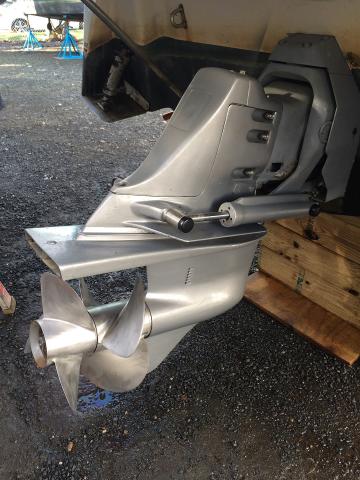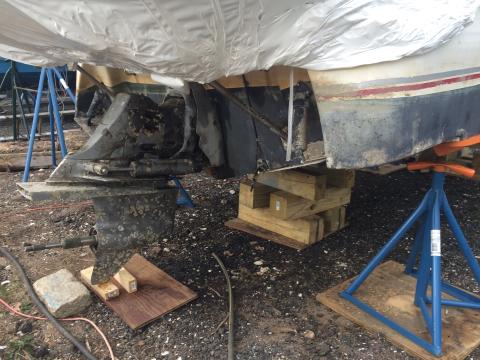Back in the winter of 2016, I decided that my outdrive was in need of some maintenance to try and protect it from the harsh realities of its salt water home. After pulling the boat out of the water for the winter, the drive was pitting all over, and the paint that was previously applied was slowly disappearing, and it was past time to address it.
Preparation
After some extensive research on the process, I somehow decided that it was a project that I would able to handle myself. As with any painting job, the most difficult part would be the preparation. I spent hours each night over the course of several weeks scrubbing the drive free of growth and sanding down the existing paint coat. I used scrapers, sand paper, scotch-brite pads, and even some scuffing drill attachments. The drive has no shortage of nooks and crannies, and impossible spaces to get some leverage in, but at the end of the day, you have to do the best you can do.
Paint
Painting is absolutely not my cup of tea. There is a science to painting, and I am no scientist. I leaned on friends and family who were more proficient than I, and learned that I would need to use an aluminum 2-part primer by Cromax, VariPrime. Now I have to mix my paint to get it to work? Time to get some help. Luckily, my father was an auto body mechanic my whole life, and has plenty of experience with this type of task, so I had a lifeline. We primed the drive and had it ready for the top coat, a Volvo Penta factory silver to make her shine.
Back on the boat
Now it was time to paint the transom shield and bell housing before mounting the drive back onto the boat. For this, we cheated a bit and used a self-etching primer spray can before applying the VP paint.
A sore back and 6 bolts later, the drive looked like it was brand new off the line. I was blown away at the end result and how good it came out (pictures below). It was truly an incredible transformation.
Hindsight
I do my boating in the salt waters of Long Island Sound, and the boat sits in a slip for most of the year. This exposes the drive to all kinds of gremlins. Fast-forward a few months worth of boating when I pulled the boat out in the Winter 2016... A summer in the sound was no friend to the beautiful new drive, and upon pulling the boat, the drive once again had growth and corrosion, and reminded me of how it looked before. Of course, there was still quite a bit of benefit to all the hard-work the year before, but after such a short time, it was no longer new. Marine growth had left its mark. Ultimately, I cleaned it up again, and put on a coat of ablative (eco-friendly, no metals), and I'm back to a black outdrive.
